Camouflage nets, Palestinian farms, Irish video... 10 highlights of the Venice Biennale
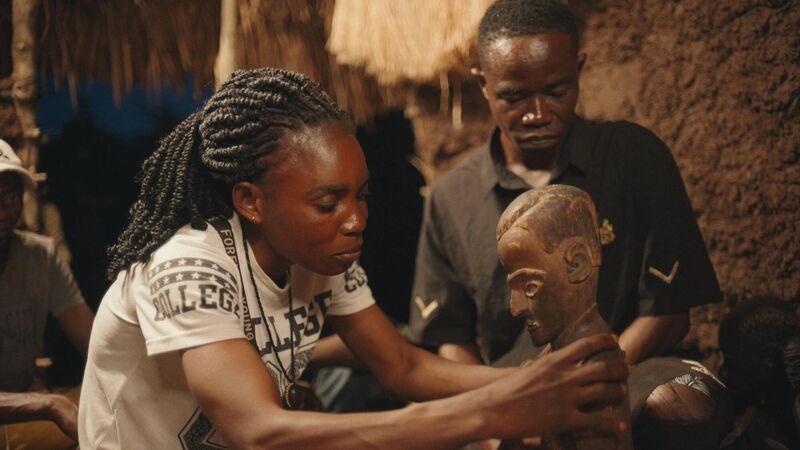
Venice Biennale 2024: A still from The Return of Balot, on show at the Netherlands' pavilion.
The art world is often held to be aloof from politics, but that is certainly not the case with the Venice Biennale, the largest and most prestigious international festival of the visual arts, which opened on 20th April and runs until 24th November.
For one thing, curator Adriano Pedrosa – the first Brazilian to hold the position in the event’s 129-year history - has chosen Foreigners Everywhere as the potentially provocative title and theme of this, the 60th edition of the Biennale.
It seems fair to observe that Pedrosa’s theme has been embraced wholeheartedly by some of the 75 countries participating, and more or less ignored by others, but sexual and cultural discrimination, migration and genocide all figure among the subjects tackled by the more than 400 artists involved. Many among them are indigenous – or First Nation – artists showing at the Biennale for the very first time.
Russia has chosen not to participate this year, having also refrained from participation in 2022, though it has loaned its pavilion to Bolivia for the occasion.
There was, inevitably, some heated debate over Israel’s participation, with many artists calling for a boycott, but artist Ruth Padel and her team sidestepped any further controversy by installing her exhibition at the national pavilion and then declining to open it until “a ceasefire and hostage release agreement is reached” in Gaza.
Italy does not recognise Palestine as a state, and thus it does not have a national pavilion of its own, but Palestinian artists are certainly represented, not least in the South West Bank exhibition at the Palazzo Contarini Polignac in the university district of Dorsoduro.
Eimear Walshe’s ROMANTIC IRELAND installation features a deliberately unfinished construction of earthen walls, along with a work on video in which seven individuals in traditional Irish dress and very contemporary latex masks cavort in a muddy field.
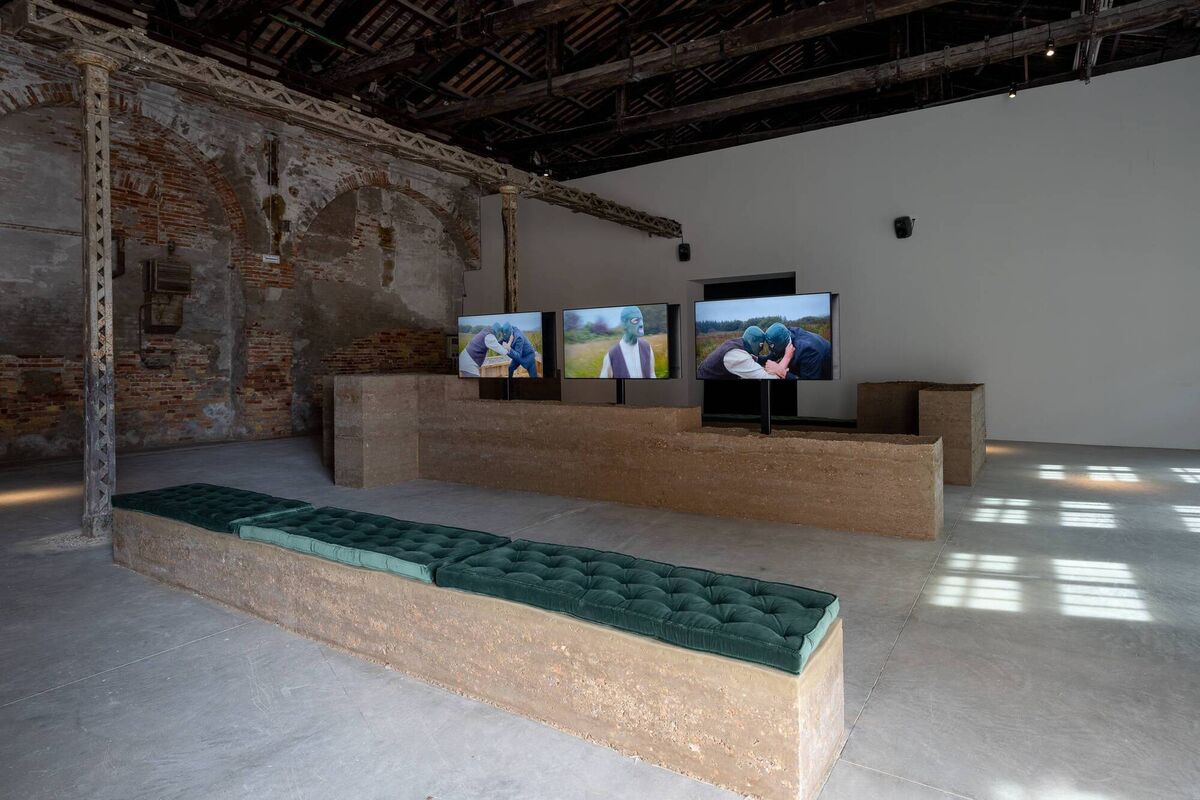
Given the budget for this year’s project – around €240,000, excluding rent for the exhibition space – it is difficult to see why the video has been produced so crudely, on mobile phones, though the project is largely redeemed by its soundtrack, an opera for five voices composed by Amanda Feery, with a libretto by Walshe describing the scene of an eviction.
There is an awful lot of work on video at this edition of the Biennale, some of it more memorable than others. John Akomfrah’s Listening All Night to the Rain installation is hugely ambitious and certainly memorable, a series of film collages – or ‘cantos’, as he calls them – that explore the history of migrant communities in Britain.
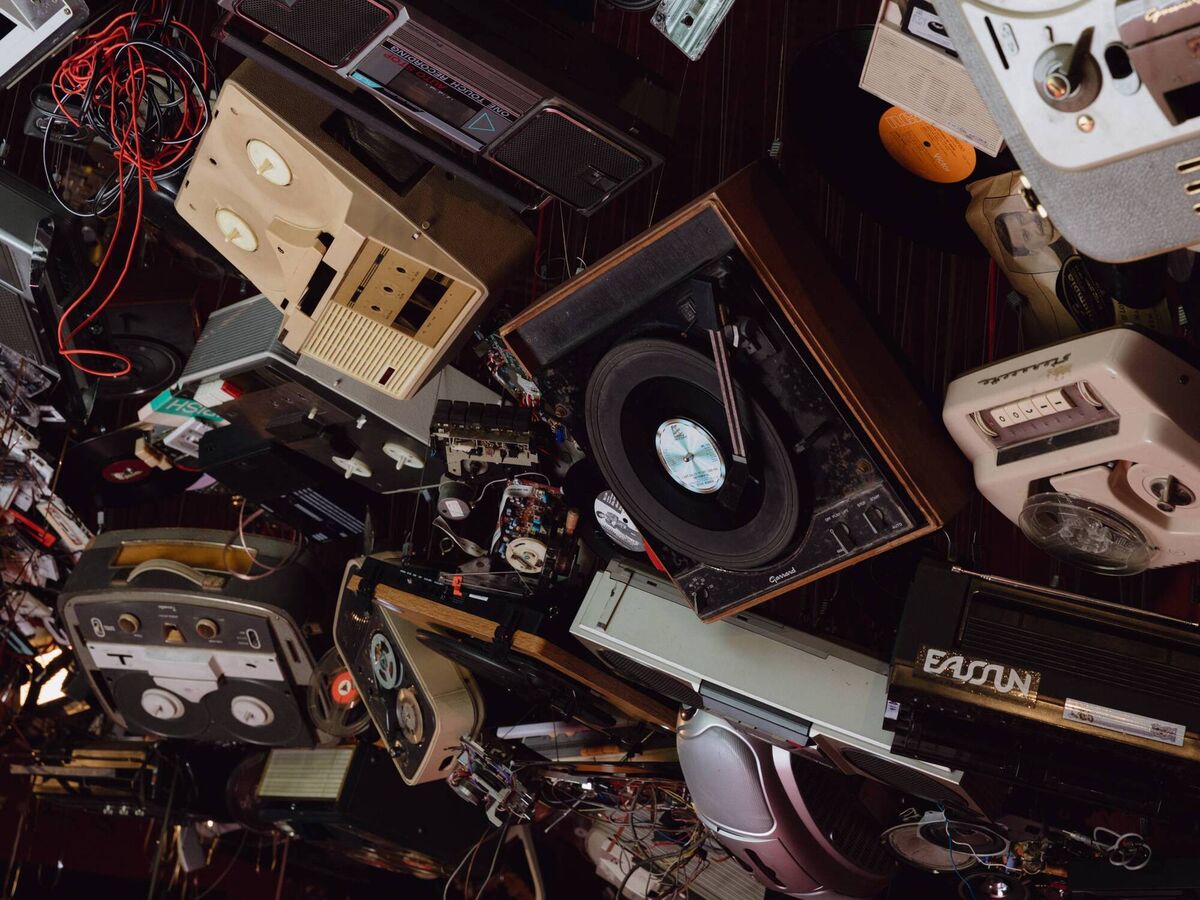
Black workers toiling in factories. Forlorn figures gazing out to sea. Rubber ducks escaping from a cargo ship. In Akomfrah’s vision, all are connected, and the soundtrack - of found sounds, snatches of speeches and music - ensures that the visitor is entirely immersed in the experience.
Cercle d’Art des Travailleurs de Plantation Congolese (CATPC) is a collective of artists based in Lusanga, in the heart of the Democratic Republic of the Congo, on a plantation once owned by the British-Dutch conglomerate Unilever. Their installation, The International Celebration of Blasphemy and the Sacred, includes a series of figurative sculptures, made of clay, cacao and palm oil.
Also featured is a film chronicling the return to Lusango – on loan from the Virginia Museum of Fine Arts in America - of the Balot statue, carved in 1931 to help protect plantation workers from abuse.
Open Group – the European artists Yuriy Biley, Pavlo Kovach and Anton Varga – present Repeat After Me II, one of the most moving and imaginative works in the entire Biennale. It comprises two video installations, created in 2022 and 2024, for which they invited Ukrainian civilians to imitate gunshots, missiles and explosions, sounds they have become all too familiar with since the Russian invasion.
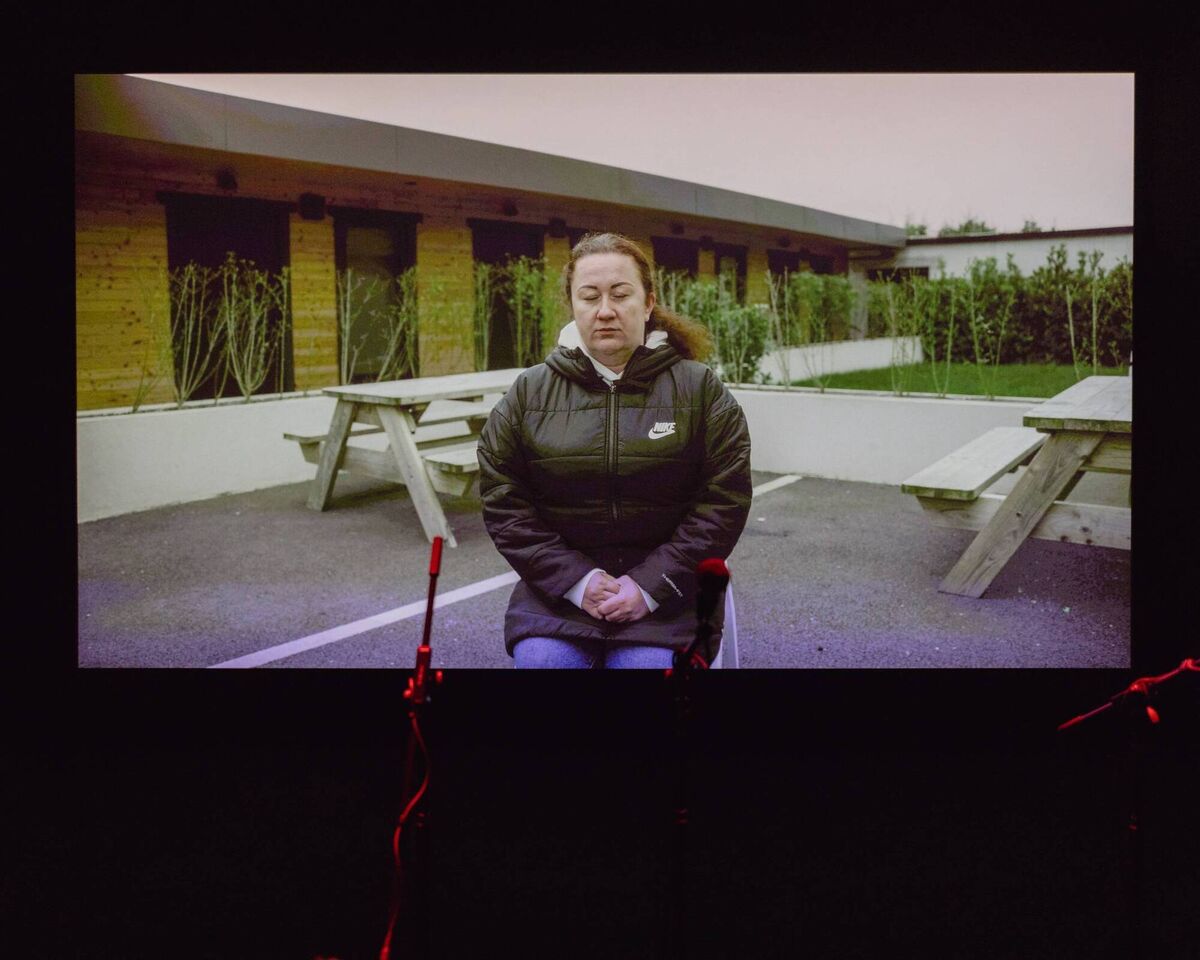
The first video was shot in Lviv, the second in a number of European refugee centres, including Tullamore, Co Offaly.
The title of Ukraine’s exhibition, Net Making, is inspired by the collective weaving of camouflage nets. It includes Daniil Revkovskyi and Andrii Rachynskyi’s Civilians, Invasion, a video collage assembled from footage of the Russian invasion uploaded online by civilian filmmakers. The footage, depicting the aftermath of bombings and killings, is often harrowing.
A second work on video, Andrii Dostliev and Lia Dostlieva’s decidedly discomforting Comfort Work, features interviews with Ukrainian refugees, portrayed by professional European actors, to create images “that correspond to the desires of Europeans based on stereotypes about immigrants.”
Gallery South West Bank – Landworks, Collective Action and Sound is an official Biennale Collateral Event, featuring work by 20 artists and collectives working in and around the South West Bank in Palestine.
Some of the highlights include Adam Broomberg’s stunning black and white photographs of ancient olive trees; Adam Rouhana’s evocative colour photograph of a Palestianian boy devouring a watermelon; and Mohammed Saleh’s video blog detailing the destruction – by the Israeli Defense Forces – of the urban farm he planted with local children in Bethlehem.
The French-Moroccan artist Bouchra Khalili shows as part of the Biennale’s Nucleo Contemporaneo programme, focused on the work of queer, outsider, folk and indigenous artists. Khalili’s The Mapping Journey Project (2008 – 11) is a series of videos, each featuring narration by an economic migrant who uses a permanent marker to trace their journey across a map of North Africa and Europe.
It’s gripping stuff: there are tales of young men travelling extraordinary distances without money or papers; exploitation by employers; and arrests and deportations by the authorities. Whatever about their status as ‘illegals,’ one can only empathise with these individuals, whose faces are never revealed.
The Mataaho Collective – Maori women artists Bridget Reweti, Erena Baker, Sarah Hudson and Terri Te Tau - are worthy winners of the Biennale’s Golden Lion for best international participation for their wonderful Takapau installation, a woven arrangement of six kilometres of fluorescent trucking straps, steel buckles, ratchets and J-hooks suspended from the ceiling overhead.
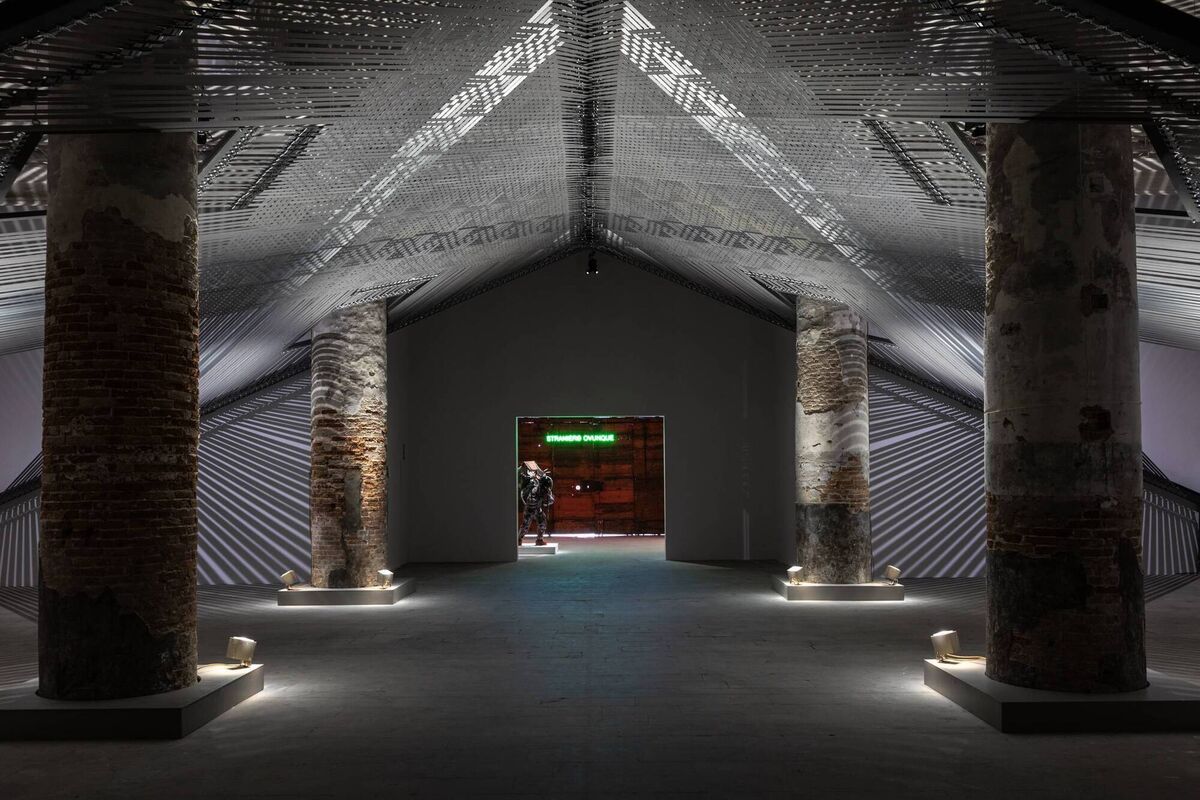
The work takes its title form the finely woven mats used in traditional Maori ceremonies, particularly those relating to childbirth.
Glicéria Tupinambá, representing Brazil, has renamed its exhibition space the Hãhãwpuá Pavilion for the occasion. Hãhãwpuá means ‘the great land’, the indigenous Pataxó people’s word for the territory before its conquest by the Portuguese.
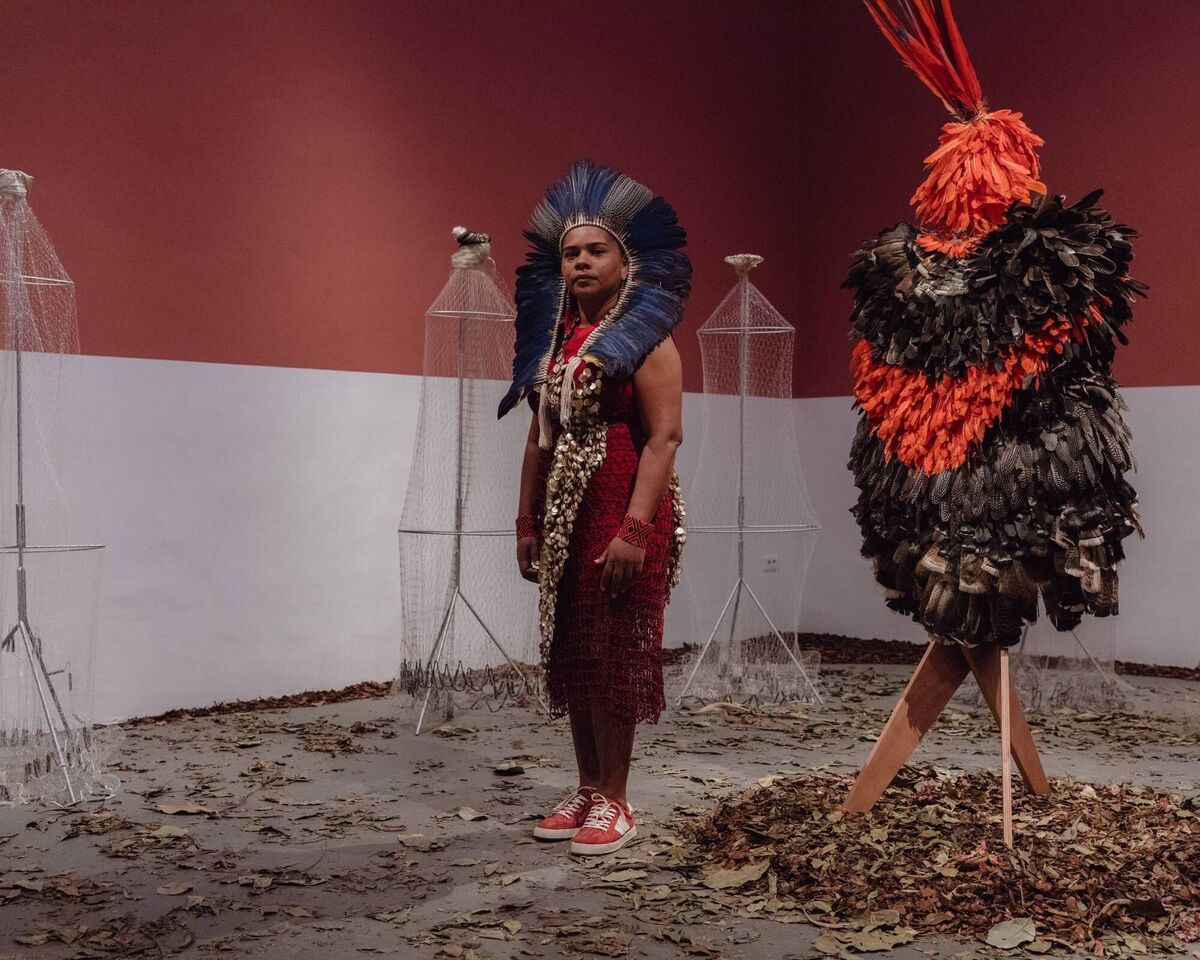
She has also invited two other artists – Olinda Tupinambá and Ziel Karapotó – to participate. Included are works on video that explore the destruction of the rain forests, and an installation called School of Fish, comprised of fishing nets, maracas and ballistic projectiles. The artists also call for the return of a number of Tupinambá sacred cloaks from museums in Brazil and Europe.
Wael Shawky’s films tend to seduce the viewer with their wicked sense of humour, whilst dealing with deadly serious issues of political chicanery and violence. Drama 1882, the new musical film Shawky wrote, choreographed and directed for the Egyptian pavilion, takes as its starting point a row over an unpaid fare for a donkey ride, which leads to a killing, riots, and the full-scale bombardment of the city of Alexandria by the British, who went on to occupy Egypt until 1956.
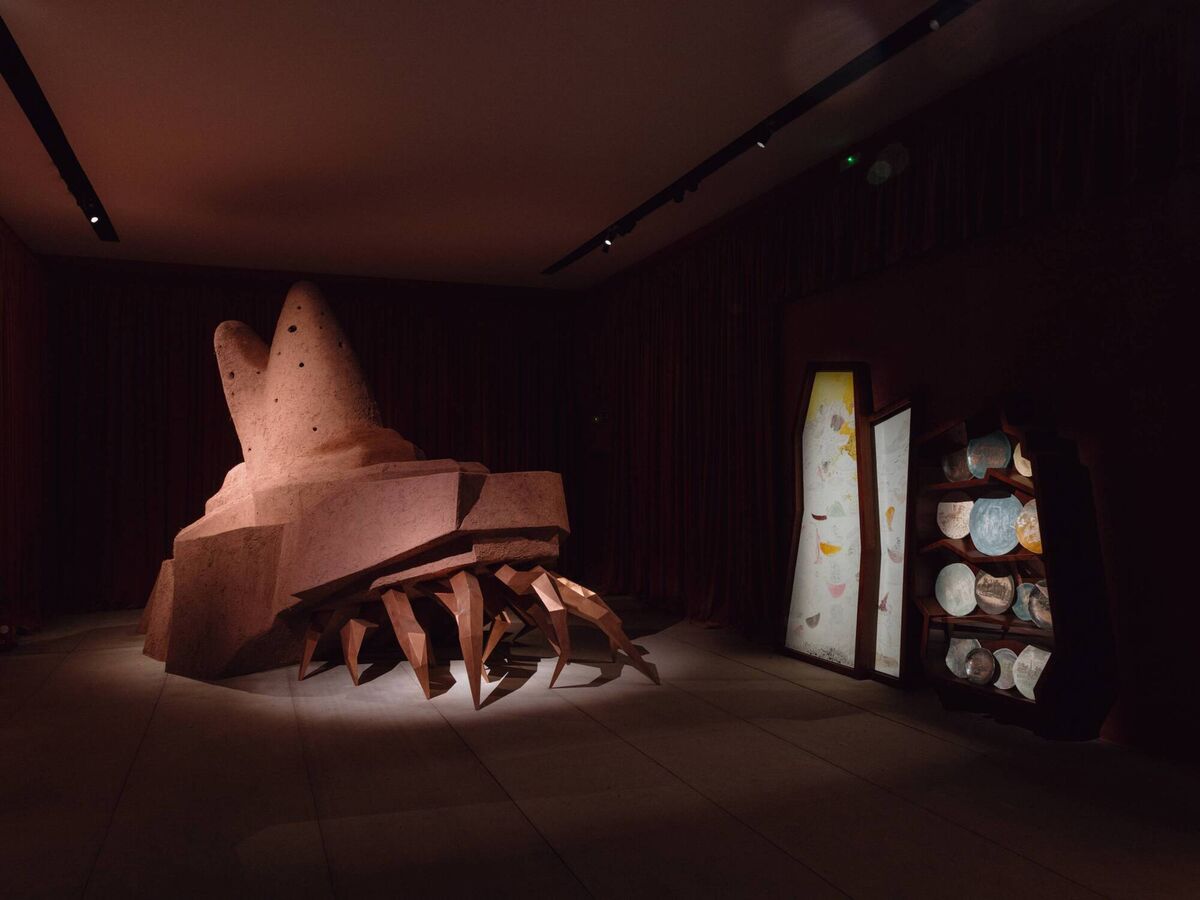
Shawky often uses puppets in his films; in this instance, he employs real actors, which makes the events seem all the more poignant. Seldom has historical tragedy been portrayed with such wisdom or wit.
- The Venice Biennale runs until November 24. Further information: labiennale.org



